- The Colorful Sixties: Color TV, 8-Track Tapes, and Men on the Moon
- The Entertaining Seventies: Videogames, VCRs, and Walkmen
- The Fractious Eighties: Videodiscs, PCs, and CDs
- The Networking Nineties: Email, Windows, and the Web
- The New Millennium: HDTV, Digital Music, and Smartphones
- The Turbulent Teens: Technology Today
The Networking Nineties: Email, Windows, and the Web
Things changed yet again in the 1990s. Computers became more powerful and easier to use, yes, but the real change was that our machines could "talk" to one another via connected networks. The 1990s represented the dawn of our current networked society, thanks to the emergence of the Internet.
Before we get to all the cyberstuff, however, let's see what was happening with other technology in the home.
The 1990s saw the emergence of digital photography for the mass market. The first consumer digital cameras were released in the late 1980s, but the market really took off in the early 1990s with affordable digital cameras from Kodak, Minolta, Canon, and Nikon (see Figure 16). By the end of the decade, digital cameras were putting a real dent into the traditional film camera market.
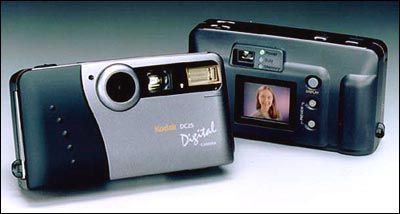
Figure 16 Kodak's DC25 digital camera, released in 1996. It had 0.2 pixel (493 × 373 pixels) resolution, with 1MB of internal flash memory, and it sold for $299.
In the living room, cable TV moved beyond 35 channels and started offering just about everything for everyone via a variety of niche networks. Cable wasn't the only game in town, however; with the advent of direct broadcast satellite (DBS) TV, from the likes of PrimeStar (launched in 1991), DirecTV (1994), and the Dish Network (1996), all offered even more programming without any of those bothersome cables.
Videogames also grew more sophisticated throughout the decade. The so-called fifth generation of game consoles (from 1989–1994), including the Sega Genesis and Nintendo Super NES, featured 16-bit processors. The sixth generation dawned in 1995 with more powerful 64-bit systems such as the original Sony PlayStation (see Figure 17), Nintendo 64, and Sega Saturn. By the end of the decade, the seventh generation was enjoined, with 128-bit systems such as the Sony PlayStation 2, Nintendo GameCube, Sega Dreamcast, and the original Microsoft Xbox.
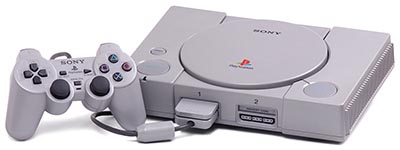
Figure 17 The original Sony PlayStation videogame console, circa 1995.
On the home video front, video went digital with the DVD format officially launching in 1997, when Warner introduced its first 30 film titles for the home market. By the end of the decade, several million homes owned DVD players, and the DVD was on the way to replacing VHS as the dominant home video format.
The biggest thing in the 1990s, however, was the concept of connecting computers together into networks—either local or wide area. Connected computers meant connected users, changing the way we worked, learned, and had fun. Businesses large and small set up local area networks that connected all their employees' computers. This technology enabled employees to share applications, files, and more—and to communicate with each other via intraoffice (and later interoffice) email.
That's right—email wasn't a thing at all until the early 1990s. (Even later, for some stuck-in-the-mud companies.) Email changed the way people communicated. The traditional printed memo and handwritten letter quickly gave way to shorter (often less grammatically correct) electronic missives, fired off virtually without thinking and received at the speed of light. For better or worse, email took over the corporate world.
At home, tech-savvy users had been connecting to other users since the late 1970s, using what was called an "electronic bulletin board service" (BBS). Each BBS was an online community hosted on one user's computer, with other members dialing into the BBS using modems connected to their PCs. Most BBSes were topic-specific, and many were locally focused, but the BBS enabled computer users to chat with each other on message boards and in the occasional live "chat room."
BBSes were supplanted by commercial online services in the late 1980s. CompuServe, America Online (known as AOL), and Prodigy charged members $10 or so each month to dial into the service, which hosted nationwide message boards and chat rooms, and offered member-to-member email (see Figure 18).
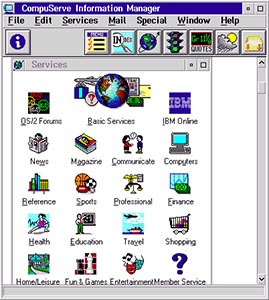
Figure 18 Before the Internet, many people connected to each other via online services such as CompuServe.
These online services were eventually pushed aside by a much larger phenomenon called the Internet. Based on the government's Advanced Research Projects Agency Network (ARPANET), created way back in 1969, the Internet first gained a stronghold in connected colleges and universities around the world. Students got used to their university-sponsored email and wanted to keep using it when they graduated into the real world. The result was the public Internet, which popped fitfully into existence in the early 1990s.
The original Internet consisted of primitive file-transfer technologies, such as Gopher and Archie, as well as discussion forums (in the form of Usenet newsgroups) and the ubiquitous email. The World Wide Web (WWW) and its network of hyperlinked websites joined the fray in 1993 or so, with early web browsers such as Cello and Mosaic, which later morphed into Netscape (see Figure 19). It took a few years for the Web to grow enough in both size and popularity to be truly useful, but grow it did; by the end of the decade, users were shopping and banking online, and no one could live without their Internet email.
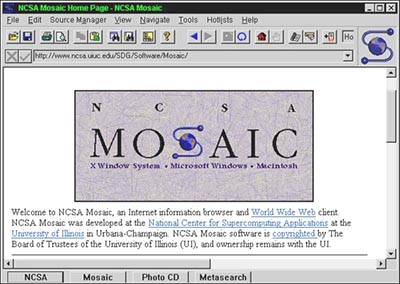
Figure 19 Surfing the WWW with the Mosaic browser.
Most of the computers connecting to the Internet were running a Microsoft operating system; Apple had only about a 5% market share at the time. At the dawn of the decade, most IBM-compatible PCs were still running MS-DOS, although the 1990 release of Windows 3 helped many people to recognize the potential of a mouse-driven GUI.
The game changer, however, was the release of Windows 95 (see Figure 20). This was a star-studded event, with music by the Rolling Stones ("Start Me Up"), and thousands of consumers lined up outside retailers in anticipation of the midnight launch. Put simply, Windows 95 and its user-friendly graphical user interface revolutionized the personal computer operating system, giving users everything they needed to improve productivity without having to delve under the technological hood.
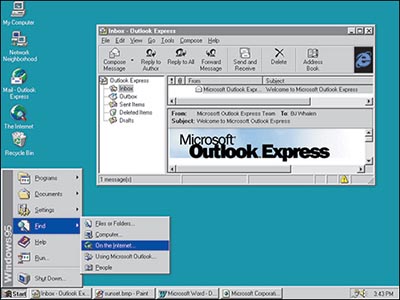
Figure 20 The Windows 95 desktop, complete with the original Start button and Start menu.
Windows 95 was a huge hit, selling 7 million copies in its first five weeks of release. It established Windows as the operating system for both consumers and corporate users, and it helped establish Microsoft's accompanying Microsoft Office software as the leading productivity suite.
By the end of the 1990s, Windows 95 had morphed into Windows 98, and techies everywhere were dreading the turn of the millennium. The feared "Y2K" bug was projected to affect systems worldwide, unequipped to handle the changing date formats from 19xx to 20xx. It turns out that our Y2K fears were overblown, but the new millennium had more exciting technological changes in store.